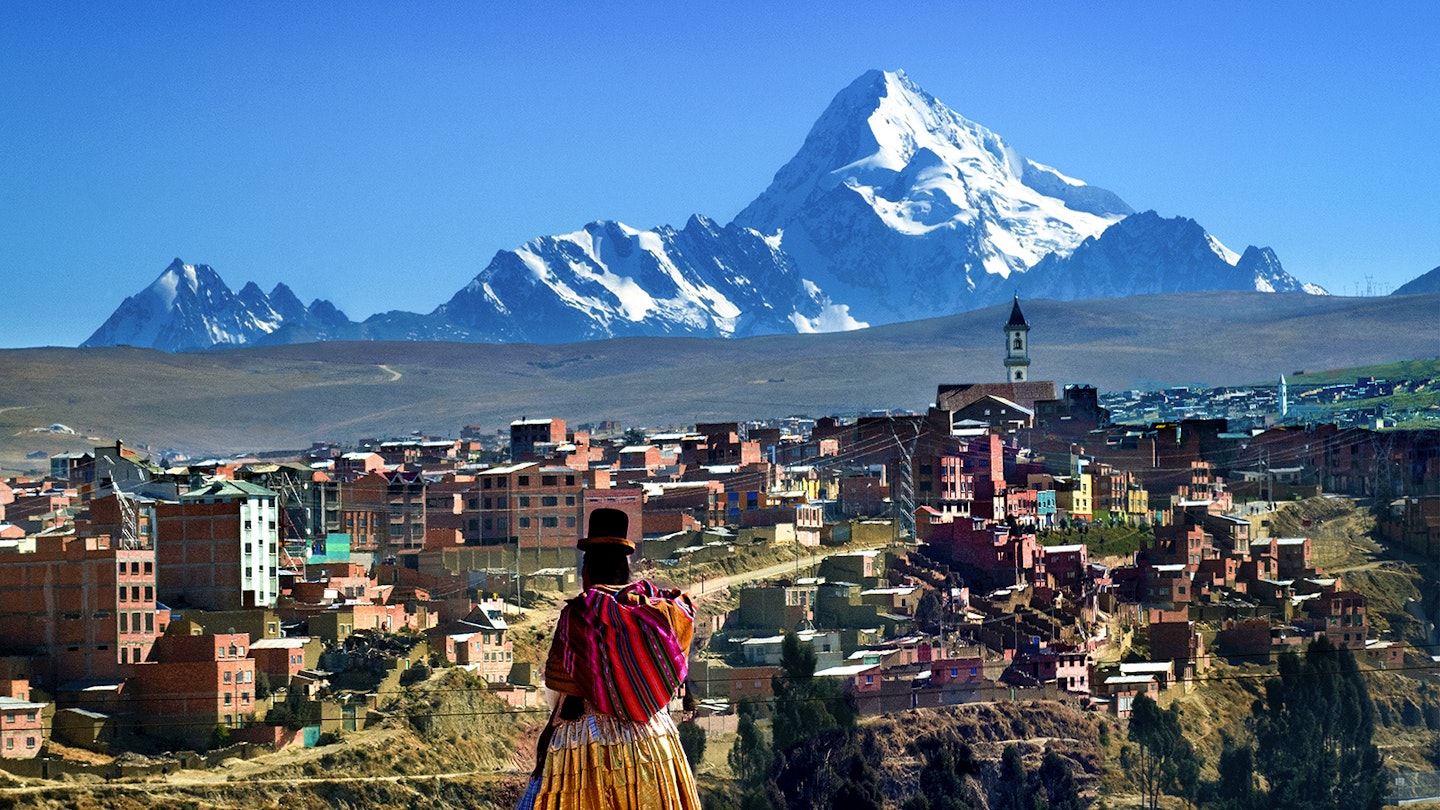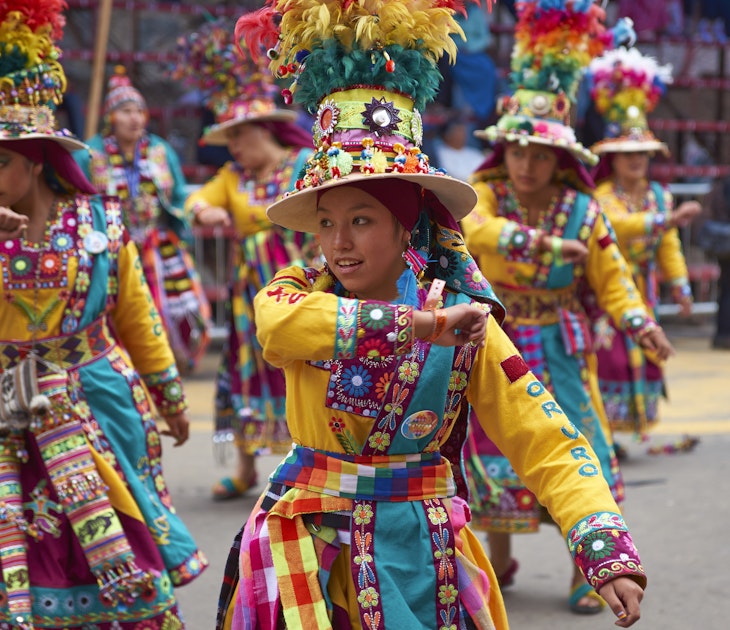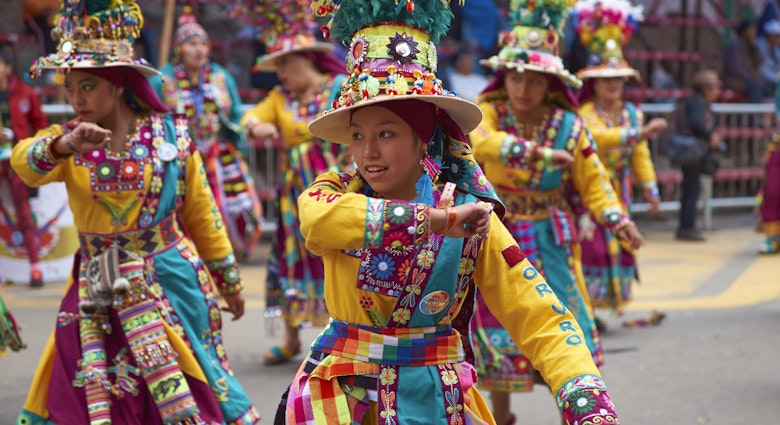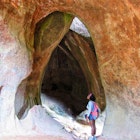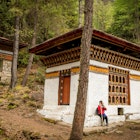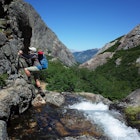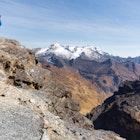With its extreme geography, fragrant markets, chaotic streets and vibrantly-clothed citizens, La Paz is easily one of the most multisensory cities on earth. We've complied the perfect guide to help you activate your five senses (sight, sound, smell, taste and touch) on an immersive trip to Bolivia’s de facto capital.

See the New Andean mansions of El Alto
The ‘New Andean’ designs of Aymará architect Freddy Mamani are so psychedelic they’ve been known to make eyeballs pop out of heads. Indeed, his mansions have completely transformed the aesthetic of La Paz’s once monochrome satellite city El Alto, which is located above 4000m in altitude on the cloud-hugging Altiplano.

Often called cholets – a portmanteau of chalet and cholo (a once derogatory, but now symbolic word for indigenous campesinos who’ve moved to the city) – these tall multi-use buildings cost up to US$600,000 to construct and have become symbols of indigenous pride, incorporating into their facades both the vivid colors of Aymará textiles and the lines and motifs of the ancient city Tiwanaku (some 60km away). With more than 70 cholets scattered across El Alto, many La Paz tour agencies are now scrambling to put together walking tours of this long-overlooked destination.
Three more visual feasts in La Paz
Mi Teleférico – Ride the world’s largest cable car system from La Paz to El Alto for a condor’s-eye view of the cityscape below.
Salar Galería de Arte – See local landscapes and traditional motifs refracted through the imaginative minds of Bolivia’s top artists.
Museo de Etnografía y Folklore – Peruse the collection of 59 ritualistic masks, which is both frightening and brilliant.
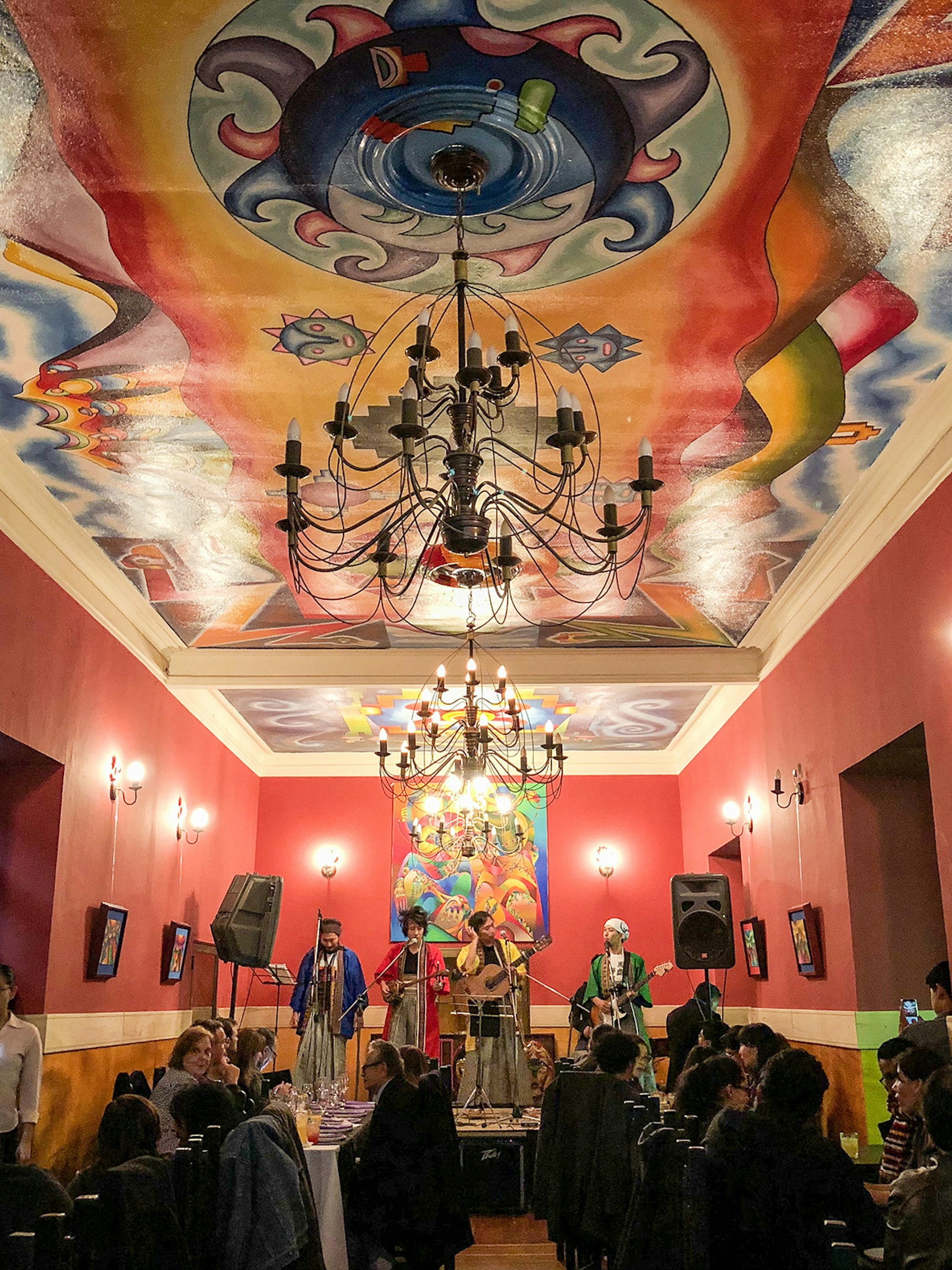
Hear the Bolivian folk music of Jallalla
Traditional Bolivian peñas (folk music venues) present Andean tunes rendered on zampoñas (pan flutes), quenas (cane flutes) and charangos (a ukulele-style instrument), but the stylish new Jallalla Cocktail Bar also makes room for fusion bands, jazz quartets and more. That’s not to say it isn’t proud of all things Bolivian. Everything you eat or drink here comes from within the nation’s boundaries, while the ceiling is covered in prismatic murals painted by of one of the country’s top contemporary artists, Roberto Mamani Mamani, whose gallery lies down below. If you want to experience the sounds of Bolivia past, present, and future, you won’t find a more stimulating venue in town.
Three more music venues in La Paz:
Peña Huari – Traditional dance performances accompany the tunes at this gringo-friendly music hall.
Peña Jamuy – While the tourists go to Peña Huari, locals head here for boisterous all-night ragers.
Teatro del Charango – Located in the Museo de Instrumentos Musicales with live folk-music shows each Saturday.
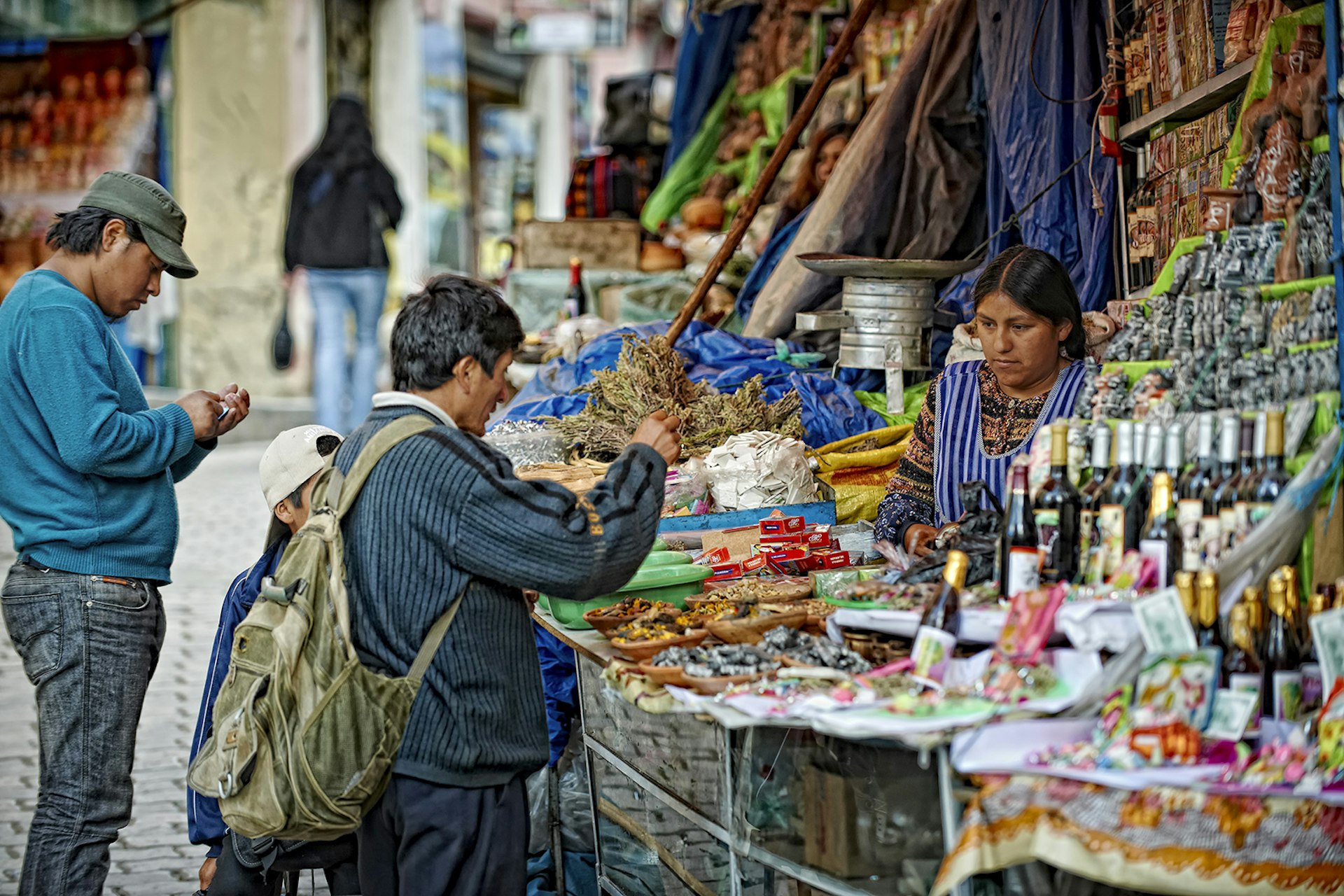
Smell the herbal potions of the Witches Market
If you grew up on Hollywood Halloween movies, Bolivia’s so-called witches market, Mercado de las Brujas, might not live up to your imagination. Instead of flying broomsticks, bubbling cauldrons and pointy hats, you’ll find a dizzying array of amulets, creepy critters and herbal potions that will help you become stupendously rich or tackle impotency (though we can’t vouch for their effectiveness!). There are also wandering yatiris (traditional healers) who can read your fortune in coca leaves. You’ll smell the witches market before you even see it thanks to its aromatic powders, herbs and incenses, not to mention the sun-dried llama fetuses (used as offerings to the earth mother Pachamama when building new homes). There’s nowhere else in Bolivia – or really the entire world – quite like it.
Three more fragrant stops in La Paz:
Mercado Lanza – Keep your nostrils alert for stinky ispi fish and sour tumbo fruit at this popular food market.
Museo de la Coca – Smell (but don’t sniff!) the sacred leaf behind cocaine and Coca-Cola at this small museum dedicated to all things coca.
Jardin Botanico – Let your nose dictate a path though this oasis of calm in the otherwise hectic city with over 1,700 native plants.
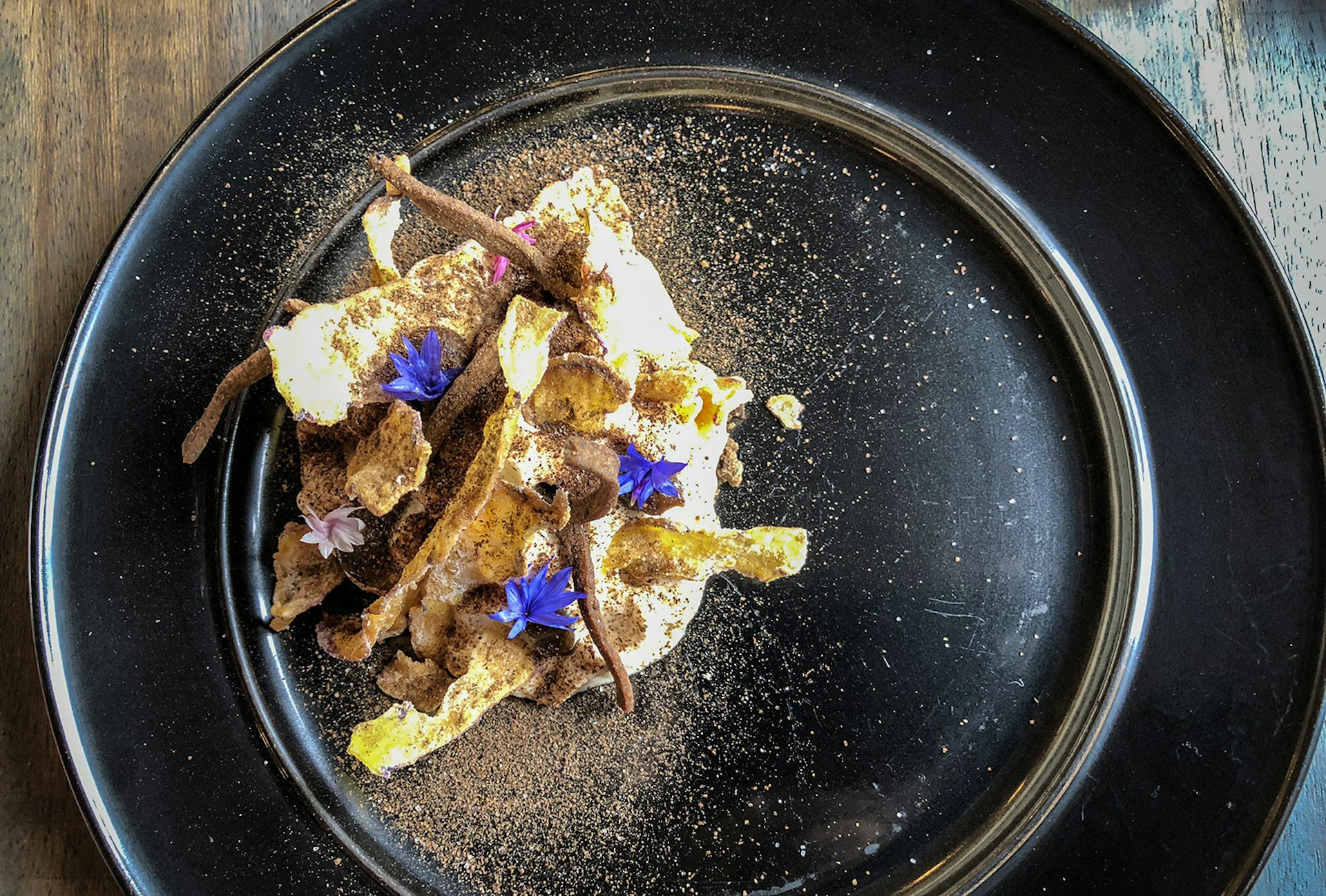
Taste the larder of the Andes and Amazon at Popular Cocina
Were you to descend from the Altiplano into the Yungas cloud forests and on to the Amazon Basin you would encounter more endemic ingredients than any other nation Bolivia’s size could dream of. Problem is, many of these fruits and vegetables – including some 4000 types of potato – were dying off with the older generations. Restaurants in La Paz like Popular Cocina are fighting to change that, using lesser-known local products to build grandma-approved dishes with a gourmet twist. Popular Cocina likes to think of itself as a (more upscale) Bolivian lunch stall, offering three-course meals sourced from nearby markets and inspired by the season.
Three more restaurants to taste the flavors of Bolivia:
Gustu – Settle in for a 20-course meal at the restaurant that sparked a culinary revolution in La Paz.
Ali Pacha – Dine on plant-based masterpieces at Bolivia’s top vegetarian restaurant.
Los Qñapés – Take tea time to the next level with delectable Bolivian treats like cuñapé (a cheesy yuca bread).
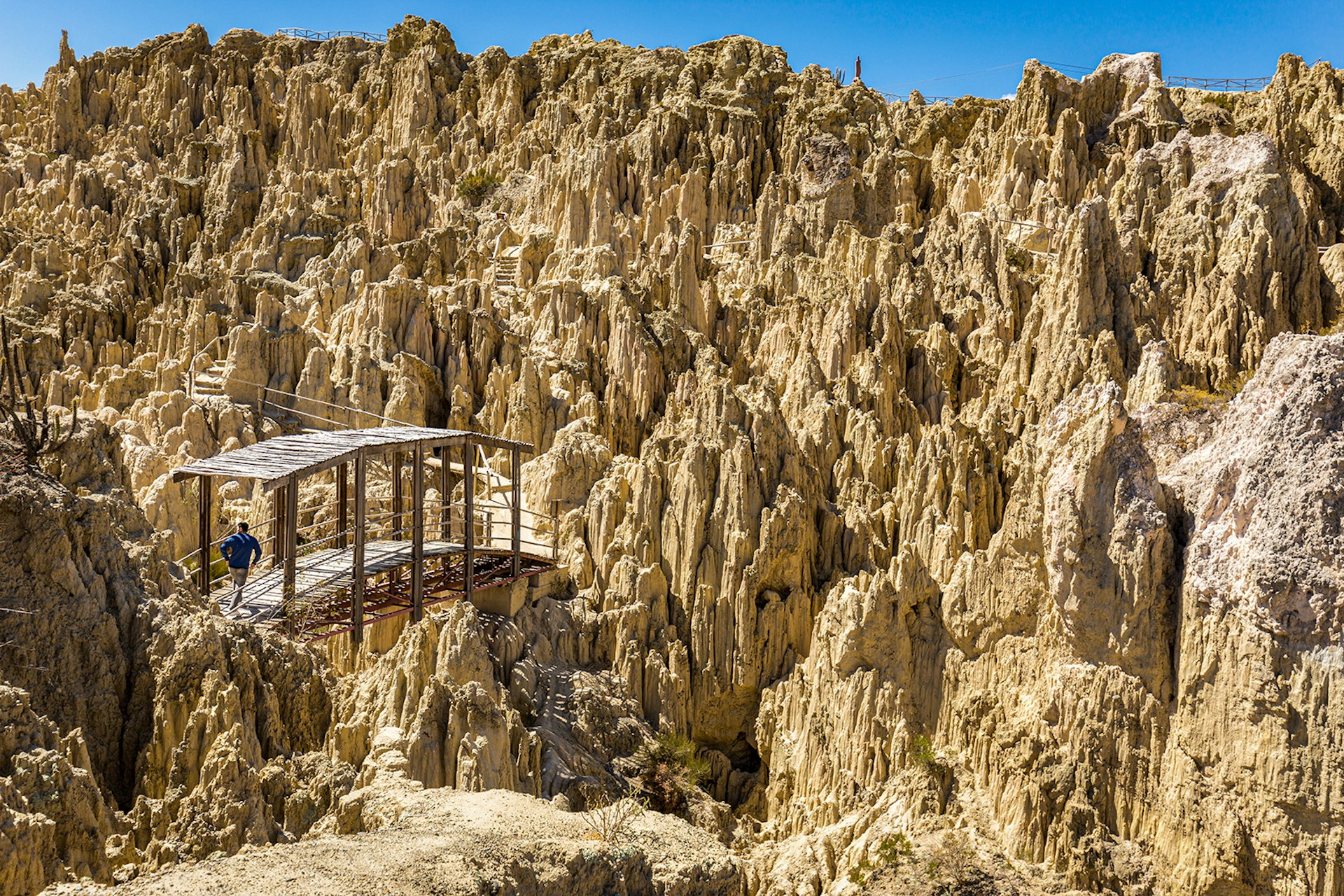
Touch the gnarled earth of Valle de la Luna
La Paz has one of the most dramatic settings of any city in the world, with its homes and skyscrapers all fighting for space within a deep earthen bowl some 3640m above sea level. One of the most impressive features of the dramatic badland peaks and natural amphitheaters to the southeast of downtown is Valle de la Luna, where you can slide your hand along eroded rock walls and feel as they crumble under the weight of your fingertips. A bizarre, hillside maze, it’s a place where getting lost amid the spindly pinnacles and thirsty cacti is just as fun as finding your way out.
Three more places to feel the tactile side of La Paz:
Muela del Diablo – Scramble up this menacing rock outcrop (really an extinct volcanic plug) on a half-day urban adventure.
Urban Rush – Channel your inner Spider-Man as you rappel down one of the city’s tallest buildings.
Cañón de Palca – Get some dust on your face in a veritable Grand Canyon just 30km east of town.
https://shop.lonelyplanet.com/products/bolivia-travel-guide-10

